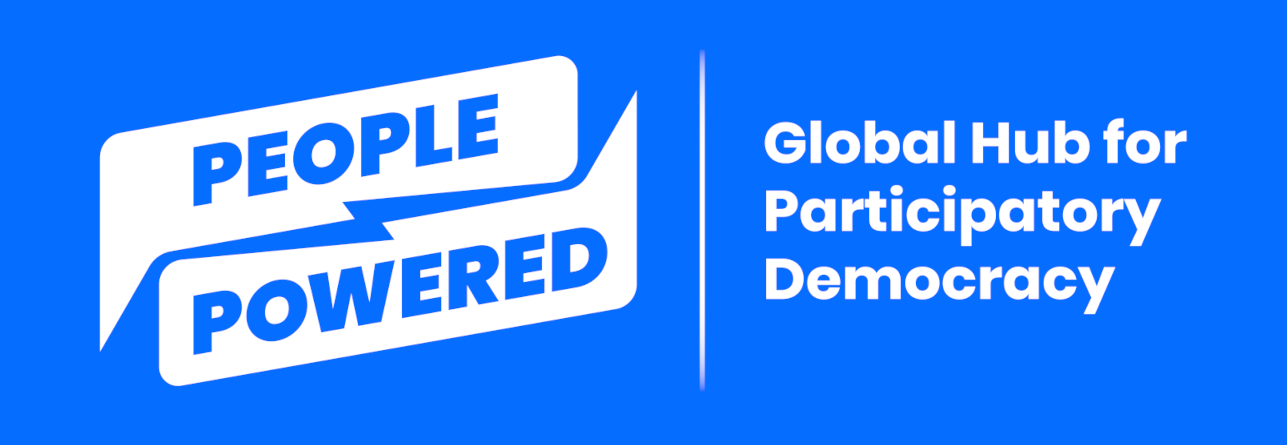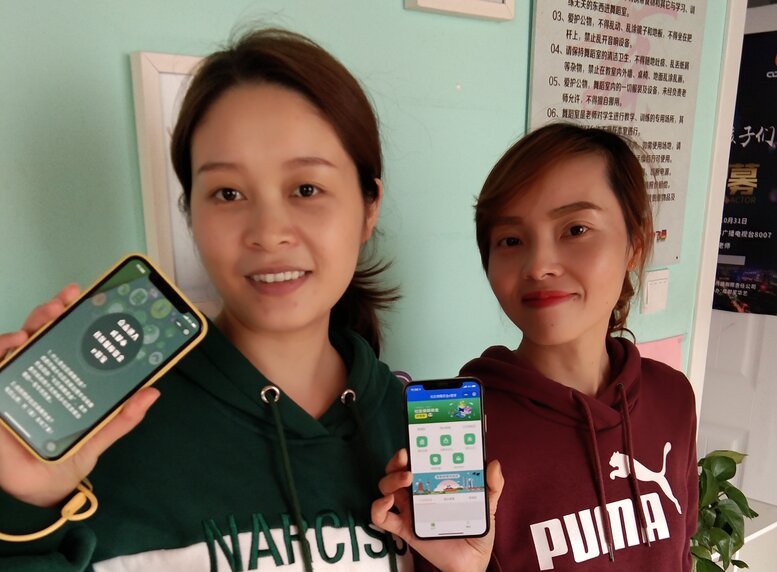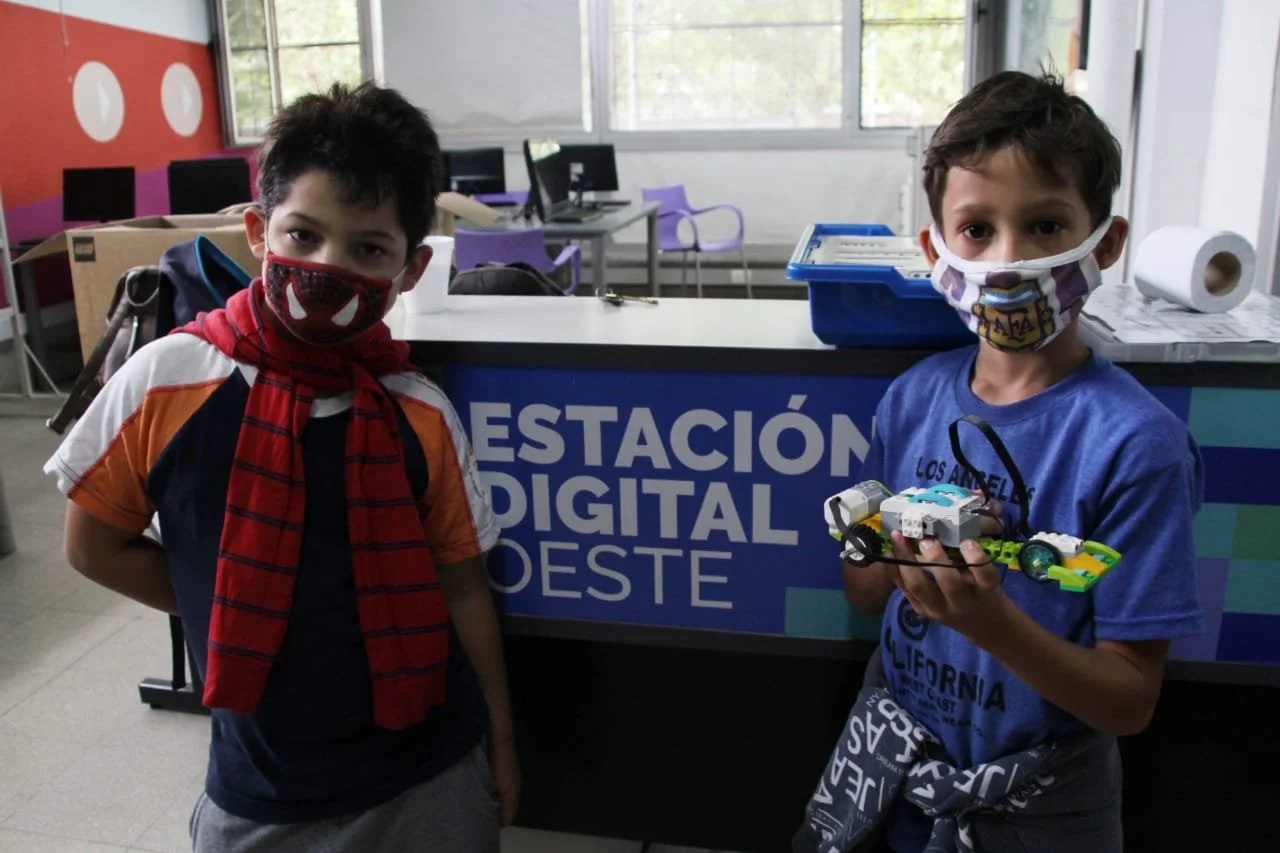In China, popular social media platform is harnessed to increase participation
/China’s Participation Center developed a “mini app” for the popular WeChat platform, and grew the number of participatory budgeting users in Chengdu city to more than 3 million. In this profile, we show how this innovative approach attracted new participants, increased transparency and reduced the cost of outreach. This is part of a series of stories on digital participation platforms produced with the support of TICTeC. To read others in the series, see these case studies from Chile, Kyrgyzstan and Argentina.
Mr. Zhang (third from left) in a neighborhood council meeting
Until he retired from his factory work in a nearby city, Mr. Zhang* had no time to get involved in civic affairs. But when he left his job and moved back into the neighborhood where he grew up, he had time on his hands. Soon, Zhang began noticing that management by the local community staff “was a bit of a mess.”
“They asked me if I could help and so I got involved,” he says. “I began to participate in the self-governance of our community and organized social activities as well. That was back in 2003, and even now I patrol the community a few times a day.”
“Back in the old days, my generation struggled to build our country. Now, we have a much better life, so we should try our best to build public welfare for our community. That is my motivation.” Mr. Zhang
In 2014, he discovered a new way to get involved in the civic life of his community: participatory budgeting (PB). A democratic process that allows residents to decide how to spend part of the government budget, PB has enabled Zhang to propose and help implement a variety of activities to build pride and cohesion among both young and old in his childhood home.
The roots of PB in China
“Democracy is a basic, fundamental demand of people in every society,” observes Ming Zhuang, who founded the Participation Center a People Powered member in the city of Chengdu in southwestern China. “One of the most central values of the Communist Party is what we call ‘mass roots,’ which means support by and for the people. Upper-level government evaluates the performance of local officials based on satisfaction and support among the residents.”
PB was initiated by the Chengdu government in 2008, led by a local politician who believed it was the best way to bring about more balance between urban and rural development. But Ming had been working to promote transparency, accountability and citizen engagement long before.
“In early 2000, I worked with experts from the World Bank on some PB projects in Shanghai and other cities. But they didn’t last; just one or two years afterward, everything was gone. So, I jumped at the opportunity in my hometown, Chengdu, to sustain this practice.”
That was in 2008, and PB is still thriving. And Ming is proud to point out that its success to date isn’t due to the intervention of international experts; it has prospered, he believes, because it is built on local traditions. There is a tradition, he says, of resolving local conflicts via a committee composed of elders and government officials who bring people together to debate and make decisions.
“In this case, the local government decided that decision-making power should be shared by all villagers, not limited to a select group.” Ming Zhuang
PB was first applied in rural areas, but was expanded to cover urban neighborhoods as well in 2012. It includes six steps: community outreach, idea collection, sorting and deliberation, voting, implementation and, finally, evaluation.
-
How did PB first get started in Chengdu?
What has been the role of international actors?
What do you think have been the most important dynamics driving PB forward in Chengdu, and how do they relate to your own context?
Through the eyes of government
“Traditionally, the government has provided everything, and the residents had no real feeling of participation in how the city is run,” reflects Mr. Chang*, a deputy section chief in Chengdu’s District A. “In particular, my district has many old communities, where residents have come to rely on the government to do everything; they don’t see themselves as the true masters. The greatest benefit of PB is that residents have developed a stronger sense of belonging to the community. It has enhanced cohesion and residents’ sense of responsibility for things like infrastructure maintenance.”
Of course, he observes, there have been challenges too. At first, community staff felt that the PB process was a bit too complicated; they were afraid of making mistakes and taking responsibility for them. As a result, Chang says, implementation was less than 80% among neighborhood staff in the beginning. Development of a detailed guidance manual helped; in 2021, participation reached 95%.
Going digital
However, growing public participation was more of a challenge, especially among young people.
“There was a lack of participation by vulnerable groups who often don’t participate in government,” notes Participation Center Research Manager Rae Liu. “Their opinions were hard to see in the proposals submitted.”
That was in part due to a lack of transparency, since PB-related information was often posted only on community bulletin boards, and those didn’t have universal awareness or use. Cost also was a challenge.
“Let me give an example,” explains Rae. “During the second step of PB, community workers delivered a survey to every household to complete, and then had to collect it again. The result was piles of sheets to sort through that required a lot of work.”
It took the COVID pandemic, however, to bring the PB process online.
“The idea of going digital had been on my mind for at least five years,” says Ming. “I just couldn’t prepare and convince the local government we should move ahead. But the inability to move about during COVID made it necessary.”
Ming considered using one of the many online platforms developed specifically for public participation in government decision-making, but decided instead to leverage the strengths of WeChat, the most popular social media channel in China. The Chinese app launched as a simple smartphone messaging platform in 2011, but expanded rapidly into a super-channel that incorporates online sales, delivery and payment.
“Most importantly, all your friends and colleagues are on it,” notes Ming. “We knew it would be much easier to just click on the WeChat app, which everybody has, instead of downloading something new.”
“We chose WeChat as the platform for our PB mini app because we wanted to tap into its reach.” Ming Zhuang
The digital element of the PB platform was officially launched, with full coverage of every village and neighborhood in Chengdu, in 2022. But a few pilot operations started the previous year. The mini app took around two years to develop, including a trial process.
“Previously, PB was often inconvenient for residents, since they had to get out and go places,” says Chang. “So, it was difficult to achieve a high rate of registration and opinion collection. We maybe got 10%. This is why we moved online. We’re shooting for 20% participation in 2023.”
He notes that for government officials, there are other benefits of the digital platform. For example, they can easily monitor the use of funds in various neighborhoods in real time. “There was no intuitive and effective way to check that before,” Chang says.
The transition hasn’t been all easy, however. Chang notes that although WeChat is nearly universally used on a daily basis, the PB mini app is not. So, in the beginning at least, it takes work by community staff to reach residents, face to face or by phone, to get them to register. And residents who previously participated in PB in person can be hard to find again. “We have a high migration rate,” explains Chang.
-
What was the main reason behind the decision to take the PB process online in Chengdu?
Why did the Participation Center use a social media channel (WeChat) rather than one of the platforms designed specifically for digital participation?
In your context which do think would make the most sense using a digital platform that’s already actively used by most citizens, or a specialized tool?
How it works
“We’ve digitalized the entire cycle of participatory budgeting,” notes Rae. “There are five sections, corresponding to each step of the PB process.”
What users of the mini app see during one of the voting phases.
Proposal collection. The first step is to collect proposals for use of the money allocated for PB. Residents are able to view their proposals and those of everyone else. The main guideline is that proposals must be for projects that are community- or neighborhood-driven — not, for example, related to education or health care, which are decided and run by the state.
The most common types of projects proposed are related to community-building. For example, residents might propose conversion of a wasted corner of a neighborhood into a recreation center for seniors or children. Another common category is sanitation and environment, like building a community garden.Voting. The mini app shows the names of the projects proposed, the category (infrastructure, social services, etc.), brief descriptions and how many votes they have attracted so far. Of the 250,000 proposals submitted in 2022, 20,000 were selected, with a budget of $200 million.
Neighborhood committees are asked to share a QR code in WeChat forums, in which there are thousands of participants, encouraging participants to vote for their favorite ideas. Those same committees, usually made up of a dozen to 30 seniors and others who are active in public affairs, make the decision on which projects to fund based on resident votes. They also decide how much budget to allocate to each.Selection of contractors. Once the votes are in and winning projects are selected, the next step is to choose contractors to implement projects like repaved roads. Both the request for bids and the bids themselves are made public via the platform — including the budget and the deadlines.
“The purpose of this transparency is to allow everybody to see the money going out and report any corruption. Through our app, residents can report any problems they’re aware of. Such transparency in procurement isn’t common yet in China, although it’s long been my desire,” notes Ming. “It was very hard to bring this about. I tried for many years and failed many times. Then a new department leader came in and he offered me this opportunity.”
It’s been so successful, however, that government officials now want to take it over from the Participation Center. “Our biggest concern is the extent to which the government will keep it up. I will stay involved, but will have a lot more limitations,” notes Ming.Implementation. During this phase, residents can choose, “I want to monitor.” For example, for a road-pavement project, they can provide input by uploading pictures and commenting, “I haven't seen anything put down,” or “it's poor quality.” In most neighborhoods, there is also a supervising committee.
Residents also can view the projects in other neighborhoods; each year, says Ming, there are more than 30,000 projects.Evaluation. Usually, this stage occurs at the end of each year and early the following year. If a project has been implemented, the contractor will click into the system and submit results for residents to evaluate. Residents can comment via text and enter a star rating of one to five.
Integrating online with ‘real world’
In-person PB isn’t going away, however. One of the aspects of the process that online tools haven’t quite mastered is deliberation.
Online, people can comment on proposals, but only with a few words or sentences. So, Ming says he is hoping to test a new feature.
“Usually, an offline council meeting is held to come to a final decision, but now we want to make the session available online as well,” explains Ming. “Residents who can’t be on site can participate by posting comments. What they type on their computers or cell phones will be displayed on the screen so everybody can see.”
Rae adds that it's still difficult for some older people to participate online because they're not familiar with digital devices or new technologies. “That's one of the reasons why it’s important to have an integrated approach.”
Assessing success
There are 3,044 neighborhoods in Chengdu and nearly 3,000 are participating in PB. Among the 23 million residents, registration stands at more than 10%; that’s more than 3 million people. Nearly 10% of registered users have engaged in at least one stage of PB.
Going digital has helped. In the past, Ming says, only one member from each household participated. Now, with the WeChat app, it’s more likely that every adult in a household will vote and express their ideas.
“The most important metrics to pay attention to is how many proposals are submitted and the overall engagement rate,” notes Ming.
Since 2021, 1.3 million proposals have been submitted by Chengdu residents. In 2022, there were 250,000, the majority (60-70%) submitted online.
Engagement, however, still needs to grow. Most residents engage during the proposal and voting stages. Not many follow all the way through implementation and monitoring. One new development that should change that is the payment of contractors in installments, with the final one dependent on a satisfactory rating above 80%.
“To grow engagement, we mainly need time for more residents to get used to the online PB platform, because this is only the first year of full coverage,” explains Ming. “In my estimation, more than 20% or 30% of residents will engage in three or four years. We have to allow more time for residents to get used to this platform.”
-
Why can deliberation be difficult with online participation?
How can integration with offline activities help?
What metrics of success are most meaningful and why?
But what about Mr. Zhang? When PB went digital, so did he. “The WeChat app is quite convenient,” he says. “I don’t have to go out; I can simply click on the applet. I like it.”
He is among those who submitted proposals and saw them implemented. For example, Zhang says, “I suggested that my community conduct a disaster-preparedness drill. And we did. We sent a group to the Center of Disease Prevention and Control to learn about earthquakes and other possible natural disasters so we could return home and raise awareness. Without participatory budgeting, we wouldn’t have a way to say what we want and make it happen.”
*Their full names and titles have been withheld at their request.
Key lessons
Benefits of digital participation platforms
Attract participants who often don’t participate, such as youth and individuals who have difficulty leaving home.
Offer greater transparency at every step of the process.
Reduce cost of outreach.
How to use digital platforms effectively
Integrate participation tools into existing, widely used social media.
Combine online platforms with offline outreach and discussions.
Ready to explore further?
Visit the People Powered Digital Participation Platform Guide and ratings.
Sign up for coaching by an experienced mentor.
Subscribe to the People Powered newsletter if you have not already, to learn about upcoming workshops, courses and other learning opportunities.











